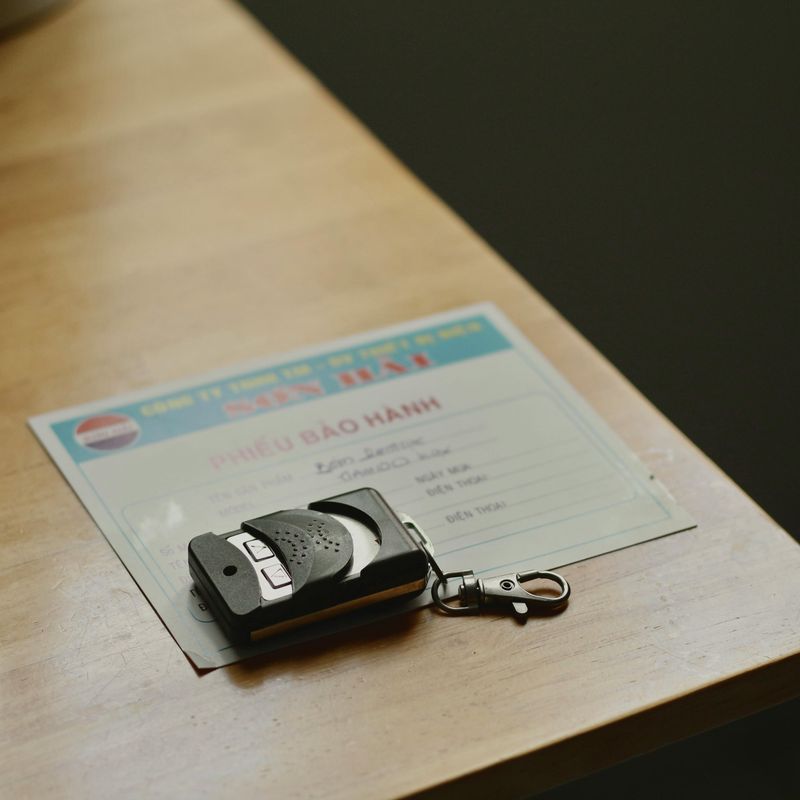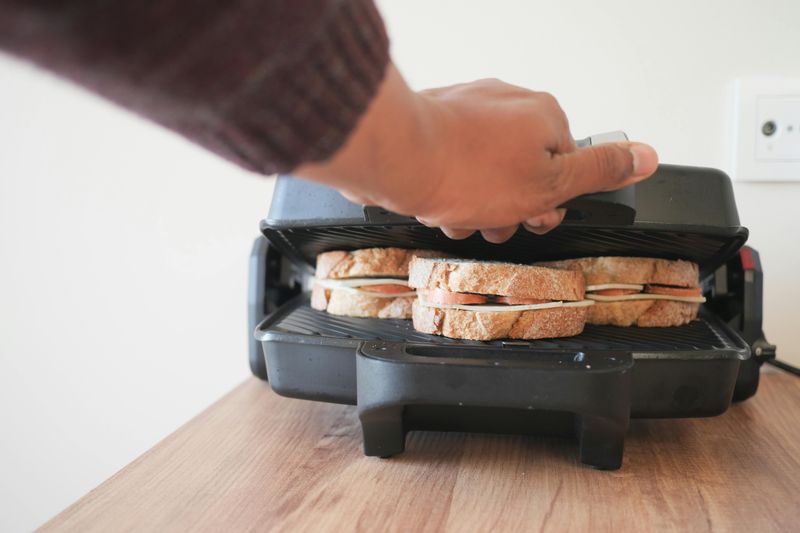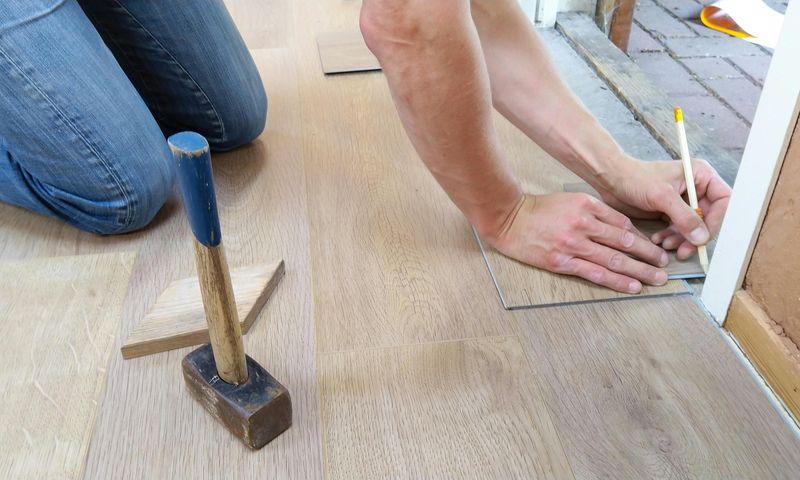27 Purchases That Feel Smart Now but Always Lead to Regret Later

There’s nothing quite like the thrill of a “smart purchase.” You’ve done your research, found the deal, and convinced yourself that Future You will thank Present You for this genius decision. But then, a few months (or even days) later, the shine wears off. The “investment” feels more like a mistake, and suddenly you’re staring at a credit card bill wondering what exactly possessed you.
1. Extended Warranties

It feels reassuring to protect your purchase. After all, things break, right? The salesperson leans in and says, “You’ll thank yourself later.” But statistically, you probably won’t. Most products never malfunction during the warranty period — and if they do, the fine print often ensures it’s not covered anyway.
You might think you’re buying peace of mind, but really you’re just padding the store’s profit margin. Retailers make billions every year on extended warranties that consumers rarely use. It’s a safety net that’s more illusion than protection.
Instead of paying for another layer of “what if,” stash that money in an emergency fund. That way, if something does go wrong, you’ve got real control — not a corporate loophole in disguise.
2. Timeshares

At first, it sounds like the dream: guaranteed vacations in gorgeous locations for life. The presentations are persuasive, the champagne is flowing, and everyone seems so happy about their “investment.”
But what they don’t emphasize is the lifetime of fees, the inflexible scheduling, and the nearly impossible resale process.
You’re not really buying a vacation home — you’re buying an obligation. The annual maintenance costs creep up, and good luck booking during peak season. Once the excitement fades, that “slice of paradise” becomes a line item you dread seeing each year.
If you crave regular getaways, save that money and book your own trips. You’ll have more freedom, fewer headaches, and you won’t be stuck paying for a beach view you stopped visiting.
3. Store Credit Cards

The discount at the register is tempting. “Save 20% today just by opening a card!” they say. But that quick decision often comes with a side of long-term regret. Store cards typically have sky-high interest rates and low credit limits that can tank your score fast.
It feels like a clever money move in the moment — you’re getting an immediate reward, after all — but over time, those purchases end up costing more once interest kicks in. And let’s not forget the endless promotional emails that tempt you to keep shopping.
Unless you’re a master of paying off balances in full every month, store credit cards are just a slick marketing trick. The real savings come from walking away.
4. Expensive Gym Memberships

When motivation is high, that $80-a-month gym membership feels like an investment in your future self. You picture toned arms, glowing skin, and a new routine that changes your life. But once the novelty wears off, it’s just another monthly bill mocking you.
Gyms rely on this psychology. They sell dreams in January and count on empty treadmills by March. You might visit a handful of times, but inertia — and life — usually take over. Before long, you’re funding a facility you barely enter.
Instead, start small. Try free outdoor workouts, online fitness videos, or pay-as-you-go classes. Your wallet — and your attendance rate — will thank you later.
5. “Investment” Collectibles

It starts innocently: a limited-edition item, a trending collectible, a “surefire” appreciation opportunity. But unless your name is Nostradamus, it’s hard to predict what will hold value. Beanie Babies, Funko Pops, NFTs — all promised fortune, few delivered.
The market for collectibles is fickle, and most of what’s sold as an “investment” ends up collecting dust rather than profit. Nostalgia is powerful, but not profitable.
If you love collecting something, do it for the joy — not the ROI. Because when the hype dies, passion is the only thing that won’t feel like a waste.
6. High-End Tech Gadgets

The latest phone, smartwatch, or VR headset always looks irresistible. You tell yourself it’s a tool for productivity or “future-proofing,” but tech ages faster than a banana in the sun. By the time you’ve learned all the features, the next version’s already out.
Manufacturers thrive on planned obsolescence — subtly convincing you that last year’s perfectly good gadget is outdated. And those incremental upgrades? Usually not worth the price tag.
Unless you truly need the new tech for work or function, skip the hype cycle. Wait a generation or two. Your current gadget’s still smarter than 99% of what you actually use it for.
7. Trendy Furniture

That Instagram-perfect couch looks amazing online. Sleek, stylish, modern — and “on sale.” But a few months in, you realize it’s less comfy lounge zone and more overpriced decor piece.
Trendy furniture often sacrifices quality for aesthetics. It looks good in photos but ages poorly in real life. Colors fade, frames wobble, and the style you loved suddenly feels dated.
Stick to timeless pieces that prioritize comfort and durability. Trends pass; your back pain doesn’t.
8. Open-Box Appliances or “Deals” on Used Furniture

Scoring a great deal on a “lightly used” appliance or secondhand sofa feels like a financial win — until you discover the hidden damage, missing parts, or suspicious smell that no amount of Febreze can fix.
Retailers love labeling items “open box” because it sounds harmless, but that often means “returned for a reason.” The short-term savings can quickly vanish in repairs or replacements.
If you must buy used, go through reputable sources or stick with items that can be easily fixed. Otherwise, that bargain will haunt your home like a ghost of bad decisions.
9. Subscription Boxes

Who doesn’t love a surprise in the mail? The first box is thrilling — a curated collection of goodies that feels like Christmas every month. But soon, the novelty fades and the clutter grows.
Subscription boxes are designed to hook you emotionally before you realize how much you’re spending. Most people forget to cancel or don’t use half the stuff inside. That’s by design — convenience breeds complacency.
Try one-off boxes or seasonal subscriptions if you really enjoy them. The best surprises are the ones that don’t drain your bank account.
10. Home Decor You Don’t Love Long-Term

It starts with a Pinterest scroll and ends with a cart full of “must-have” accents. You tell yourself this décor reflects your personality, but in six months it feels more like someone else’s taste.
Trendy décor ages quickly — colors, patterns, and styles that feel “fresh” today can feel tacky tomorrow. And once you’ve filled your space with impulse buys, redecorating becomes even more expensive.
Buy slowly, intentionally, and from the heart. Your home should tell your story, not follow someone else’s algorithm.
11. Overpriced Kitchen Gadgets

That shiny all-in-one air fryer/pressure cooker combo promised to “change your life.” Instead, it changed your counter space — by taking all of it.
Kitchen gadgets often appeal to our inner chef, but most end up forgotten after the honeymoon phase. Specialty tools like pasta makers or juicers seem smart but rarely outlast convenience fatigue.
Stick with versatile, high-quality basics. The best recipes come from skill and creativity — not from a machine collecting dust.
12. Fancy Mattresses or Bedding Sets

A good night’s sleep feels priceless, so you splurge on a $3,000 mattress and designer sheets. The first few nights? Bliss. But after a few months, you realize it’s not revolutionary — just expensive.
Many luxury bedding brands sell lifestyle dreams rather than tangible comfort. A midrange, high-quality mattress often performs just as well. And those fancy sheets? Usually more about thread count marketing than actual rest.
Sleep better knowing you didn’t overpay for marketing fluff.
13. Brand-New Cars

The smell of a new car is intoxicating — until you realize it cost you thousands in instant depreciation. The second you drive off the lot, it’s worth less. A year later, you’ve lost a small fortune.
Dealerships market “new” as safe, reliable, and status-boosting, but modern used cars are just as dependable for far less.
Unless money truly isn’t a concern, buying new is like setting cash on fire for the sake of that smell. Go certified pre-owned instead and let someone else take the depreciation hit.
14. Electric Scooters or Bikes (You Rarely Use)

Urban commuting dreams are strong — zipping around, saving gas, feeling eco-friendly. But most electric scooters and bikes end up as pricey lawn ornaments once reality sets in.
They’re fun at first, but unless you ride daily, maintenance, battery replacement, and safety gear add up quickly. And if you live somewhere with real winters? Good luck.
Rent one for a month before buying. If it becomes part of your life, great. If not, at least your garage won’t become a scooter graveyard.
15. Phone Upgrades on Payment Plans

Carriers are sneaky geniuses. They make it sound so affordable — “Just $35 a month!” — but suddenly you’re always paying for the next model before you’ve finished with the current one.
These rolling payment plans create a cycle of constant upgrades and perpetual debt. Each new phone brings minor improvements that don’t justify the endless payments.
Keep your device for a few extra years and buy outright when possible. Freedom from monthly installments feels better than any camera filter ever could.
16. Luxury “Investment” Bags or Shoes

“Investment piece” — the phrase that justifies splurging on that designer purse or pair of heels. Sure, the craftsmanship is nice, but very few fashion items actually appreciate in value.
Trends change, styles fade, and wear-and-tear crushes resale dreams. You end up babying your purchase instead of enjoying it.
If you truly love luxury, fine — but do it for the joy, not the return. Confidence never goes out of style, even if the handbag does.
17. Fast Fashion Hauls

Who can resist a $9 dress and two-day shipping? It feels thrifty and fun — until your closet bursts with clothes that fall apart after two washes.
Fast fashion preys on the dopamine rush of a “deal.” But cheap fabric and exploitative labor mean you’re paying in other ways.
Invest in fewer, better-made pieces. You’ll save money in the long run and feel better about what’s hanging in your closet.
18. High-End Skincare Fads

The promise of “glass skin” or “instant youth” is hard to resist, especially when influencers swear by it. But expensive doesn’t always equal effective.
Most luxury skincare uses the same active ingredients as affordable brands — just with prettier packaging and a hefty markup. The secret is consistency, not cost.
Your skin wants care, not gimmicks. Save the splurge for sunscreen — it’s the real anti-aging hero.
19. Salon Memberships or Beauty Subscriptions

A membership that promises flawless hair or monthly pampering sounds like self-care heaven. But unless you’re a regular, it quickly turns into a financial burden.
Most people overestimate how often they’ll go, and those unused appointments don’t roll over. You’re essentially prepaying for guilt.
Book treatments as needed. Spontaneous pampering feels better than watching your “credits” expire.
20. Meal Kit Subscriptions

Cooking made easy — sounds perfect, right? Everything’s portioned, prepped, and Instagram-ready. But those boxes are expensive, wasteful, and often less convenient than promised.
You pay for packaging, not skill, and many ingredients still require chopping, prepping, and cooking like normal. Once the novelty fades, the cost becomes hard to justify.
Instead, learn a few easy go-to recipes. You’ll save money and gain confidence in the kitchen.
21. Fancy Coffee Makers

Every coffee lover dreams of brewing café-quality lattes at home. But that $700 espresso machine usually ends up dusty after a few frustrating mornings.
Barista-style coffee takes time, skill, and maintenance — three things most of us don’t have before 9 a.m. And those pods? They cost nearly as much as a daily Starbucks habit.
Stick to a reliable drip brewer or French press. Great coffee comes from good beans, not fancy machines.
22. Kitchen Appliances for One Use (Bread Makers, Ice Cream Machines)

Bread makers, ice cream machines, pancake robots — the promise of homemade everything feels magical until you realize it’s also impractical.
Most single-purpose gadgets take up valuable counter space and rarely justify their existence after the first few tries. The convenience wears off once cleanup time hits.
If it can’t multitask, it’s probably not worth the investment. Your kitchen — and your sanity — will thank you.
23. Expensive Outdoor Gear for ‘New Hobbies’

You take one camping trip and suddenly decide you’re the next wilderness adventurer. Before you know it, you’ve spent a small fortune on gear that’s now hibernating in your garage.
Hobby enthusiasm fades fast, especially when the equipment costs more than the experience. Try renting or borrowing before investing.
If it becomes a real passion, you’ll know — and you’ll make smarter, more intentional purchases.
24. Online Courses You Never Finish

Learning new skills feels empowering — until you forget you even bought the course. The truth? Most people never finish online programs, even the expensive ones.
It’s not that the content’s bad; it’s that life gets busy. Without deadlines or accountability, enthusiasm fades.
Start with free or low-cost courses first. Once you prove your commitment, splurge on the big ones. Education only pays off when you actually finish it.
25. Expensive Planners or Productivity Tools

That leather-bound planner promised to “change your life.” But no planner can fix procrastination. Organization comes from habits, not stationery.
Many people buy productivity tools hoping to feel more in control — but end up spending more time setting up systems than actually doing the work.
Keep it simple. A to-do list and a little discipline beat a $70 planner every time.
26. Home Renovations for “Resale Value”

“Think of the ROI!” you tell yourself before knocking down that perfectly good wall. But the truth is, most renovations don’t recoup their full cost — especially the cosmetic ones.
Trendy upgrades fade fast, and future buyers might not share your taste. What feels like a smart investment today could be tomorrow’s “What were they thinking?” moment.
Renovate for yourself, not an imaginary future homeowner. Live in the now — you’re the one paying for it.
27. “Smart Home” Devices You Don’t Need

Turning your lights on with your voice feels futuristic — until your Wi-Fi drops and you’re stuck yelling at Alexa in the dark.
Smart devices promise convenience but often create complexity. They require constant updates, troubleshooting, and sometimes even subscriptions to stay functional.
Stick with what genuinely improves your life. Just because it’s “smart” doesn’t mean it’s wise.

Comments
Loading…